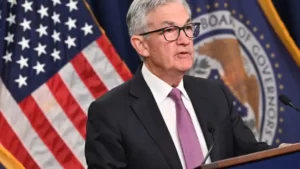Inflation slowed for a sixth-straight month in December, data out Thursday showed.
This downtrend in price increases suggests that, at last, the Federal Reserve’s inflation-fighting interest rate hikes seem to be working.
But this tool likely won’t be enough to bring inflation down to levels consistent with the Fed’s 2% target. At least not in the view of a growing number of investors.
At an event hosted by Wilmington Trust earlier this week at Electric Lemon — a swanky restaurant atop the Equinox Hotel in Hudson Yards, New York City — the firm’s CIO Tony Roth opened evening discussions by arguing “3% is the new 2%,” referring to the Fed’s inflation target.
“As inflation comes down — and it’s going to come down, it’s already coming down — it’s going to get stuck,” Roth said.
“And it’s going to get stuck as a result of the real drop in labor participation and the impact that has on wages, it’s going to get stuck because of the lack of unlimited cheap supply of manufacturing from China, and it’s going to get stuck because energy prices are not going to back down to previous levels.”
December’s Consumer Price Index (CPI) released Thursday showed inflation rose at an annual clip of 6.5% and decreased 0.1% over the prior month. Core CPI, which backs out food and energy, rose 5.7% over the prior year and 0.3% on a monthly basis — reflecting underlying stickiness in inflation.
The Fed currently targets inflation of 2% over the longer run as measured by the annual change in the price index for personal consumption expenditures.
But Wall Street increasingly sees this goal as unrealistic in a post-pandemic world. A world in which the labor force is still 3 million workers short of pre-COVID levels, companies are moving overseas manufacturing closer to home to curb supply chain disruptions, and energy prices remain persistently elevated.
“What will happen is, as we go through the year, this debate — ‘Is 3 the new 2?’ — is really going to be in the forefront,” Roth said, adding that the Fed’s choices of holding rates high or cutting rates will become even more consequential as headline inflation approaches the 4% level.
And in this view that “3% is the new 2%,” Roth is not alone.
Hedge fund manager Bill Ackman is among other Wall Street voices who have questioned the credibility of the Fed’s 2% inflation target in recent months.
In December, Ackman tweeted the target was unattainable without a “deep, job-destroying recession.” And during a call with investors the prior month, he said it was the firm’s view the central bank would not reach that goal.
Rising wages globally, the transition to alternative energy, de-globalization, and a shift to domestic sourcing and production will all weigh on the Fed’s ability to bring down inflation, in Ackman’s view, in addition to production risks “that have made nearly every U.S. CEO rethink outsourced or distant supply chains.”
“A lot more of that is going to come closer to home, and it is more expensive to do business here,” he said.
Billionaire investor Leon Cooperman, chairman and founder of family office Omega Advisors, said in a televised interview with CNBC earlier this month that if the Fed attempts to hit 2% inflation rather than settling for 3% or 4%, the S&P 500 could fall to the low 3,000s.
And BlackRock chief executive Larry Fink shared a similar sentiment at the New York Times Dealbook Summit in New York City last month, cautioning investors will likely have to live with inflation around 3-4% and interest rates of 2-3% — leading to what he referred to as a period of “malaise” for the economy.

